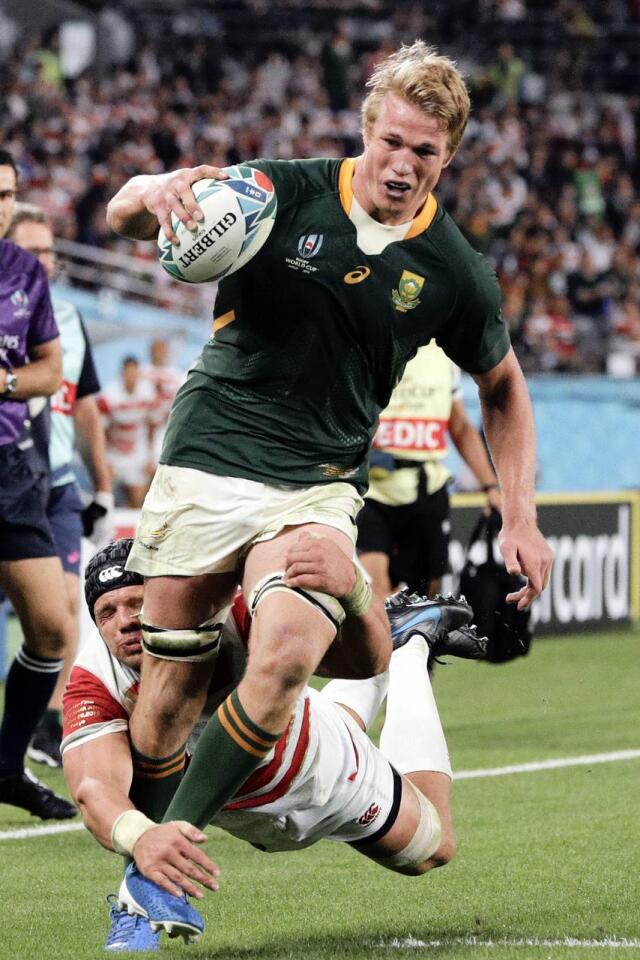Du Toit’s endearing qualities that were soon apparent were his modesty, humility, and willingness to roll up his sleeves and do the hard work
Springbok World Cup hero Pieter-Steph du Toit was named World Player of the Year on Sunday. Independent Media’s Mike Greenaway and Mark Keohane get to grips with what is it that makes him such a stand-out player?
Mike Greenaway
Back in 2012, John Plumtree told me about this “young freak” that had joined the Sharks from a school in Boland. “I’m telling you this kid is going to be great,” the Sharks coach told me.
Plumtree pointed out that the then 20-year-old’s natural strength, no doubt inherited from his grandfather Piet “Spiere” du Toit, who had played prop for the Boks in the ’60s and had a reputation for being one of South Africa’s strongest ever tightheads.
Plumtree told me that they had to get new barbells for the Sharks’ gym because Du Toit’s hubcap-like hands were too big to grasp the existing bars.
For me, Du Toit’s endearing qualities that were soon apparent were his modesty, humility, and willingness to roll up his sleeves and do the hard work.
Those qualities remain wonderfully evident in how he plays the game at the highest level. He is the heartbeat of the Springbok side that won the World Cup because of his ceaseless toil. His motor never stops running as he variously tackles, carries the ball, and wins line-outs. His work-rate off the ball is what gets him into positions to be so impressive.
Du Toit was initially used as a lock after a few failed attempts at flank, including Heyneke Meyer playing him in that position against Japan in 2015.
It was Allister Coetzee that gave Du Toit a second crack at flank, and he hasn’t looked back. Du Toit, now 27, has fully developed into the role of a unique South African blindside flank – basically, a third lock that has the mobility and skill to flourish outside the second row.
Du Toit is now playing like a combination of Danie Rossouw and Juan Smith, two of the best Bok blindside flanks of the modern era, and that is a compliment for all three of those players.
Mark Keohane
On March 5 this year, after the Stormers had beaten the Sharks, I wrote an Independent Media rave column about Pieter-Steph du Toit. I described him as a rugby freak and said that the likes of Du Toit only come around every second decade.
Former Springbok coach Jake White, when coaching Du Toit at the Sharks, told me Du Toit was the most talented player that he had ever coached.
Du Toit, in 2018 was named the South African Rugby player of the Year, and in 2019 he just got even better, if that was indeed possible. I wrote back in March that he was the best forward in world rugby.
Earlier this week, Du Toit was officially named the best player in the world.
His conditioning to get through 80 minutes the way he does makes him an exceptional athlete. His physicality matches his fitness and athleticism and he is blessed with the complete ball-in-hand skill set.
Du Toit’s defence is as good as any of the best defenders, with his tackle on All Black captain Kieran Read in Wellington a year ago still being felt by the Kiwis.
Springbok coach Rassie Erasmus, who was named the world’s best coach on the same night Du Toit was acknowledged as setting the standard as a player in 2019, was initially not awed by Du Toit when he first selected him in 2018.
Erasmus told me the talent and skill were obvious but he pushed Du Toit to find that dark place all great forwards instinctively thrive in, and once there he wanted the player to unleash the beast.
Du Toit, under Erasmus, was initially not a first-choice lock or flank.
He started the 2018 three-Test series against England as an impact player, but a year later against the same English in the World Cup final, he was indispensable to the Springboks and integral to winning the World Cup.








